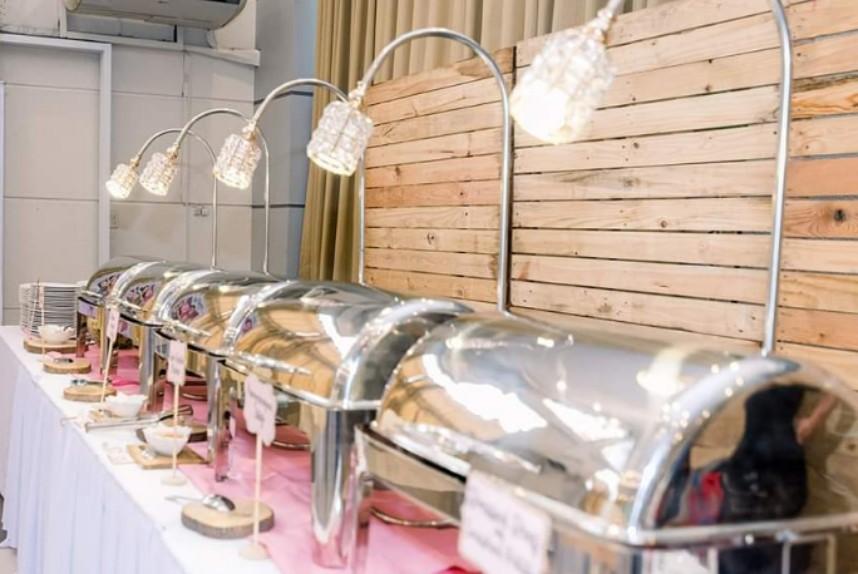Energy-Efficient Catering Equipment

In the fast-paced world of catering, where precision, speed, and quality are paramount, the equipment you choose can make or break your business. While high-performance tools are a must, there’s another factor that’s gaining traction in the industry: energy efficiency. Investing in energy-efficient catering equipment is not only a smart move for your wallet but also a significant step toward reducing your environmental footprint. Let’s explore how energy-efficient catering equipment can help you save money and the planet.
The Financial Benefits of Energy Efficiency
Running a catering business involves juggling multiple expenses—staff wages, food costs, transportation, and more. Energy bills often take up a significant portion of these operational costs. By investing in energy-efficient equipment, you can dramatically reduce your energy consumption, leading to substantial savings on utility bills.
Lower Operating Costs: Energy-efficient appliances use less power to perform the same tasks as their conventional counterparts. For example, energy-efficient ovens and refrigerators are designed with advanced insulation and temperature control technologies that minimize energy wastage. Over time, these small savings add up, reducing your overall operating costs.
Longer Lifespan: Energy-efficient equipment is often built with high-quality components designed to last longer. This durability means fewer repairs and replacements, saving you money in the long run. Additionally, many manufacturers offer extended warranties on energy-efficient models, providing extra peace of mind.
Government Incentives and Rebates: In many regions, governments and local authorities offer incentives, tax breaks, and rebates to businesses that invest in energy-efficient appliances. These incentives can significantly offset the initial cost of purchasing new equipment, making it a more attractive option for budget-conscious caterers.
Environmental Impact: Reducing Your Carbon Footprint
The catering industry, like many others, has a significant environmental impact. From food waste to energy consumption, there are many areas where improvements can be made. Switching to energy-efficient catering equipment is one of the most effective ways to reduce your carbon footprint.
Lower Greenhouse Gas Emissions: Energy-efficient appliances require less energy to operate, which means they produce fewer greenhouse gas emissions. By choosing equipment with a lower energy demand, you’re directly contributing to the reduction of your business’s carbon footprint.
Sustainable Resource Use: Energy-efficient equipment often uses resources more effectively. For instance, dishwashers and washing machines with energy-saving modes use less water and detergent, conserving these valuable resources. In turn, this helps to preserve the environment and promote sustainability within the catering industry.
Waste Reduction: Many energy-efficient appliances are designed to minimize waste. For example, commercial refrigerators and freezers with advanced temperature controls prevent food spoilage, reducing food waste. Similarly, energy-efficient ovens distribute heat more evenly, ensuring food is cooked perfectly with less energy.
Key Energy-Efficient Appliances for Caterers
When considering a shift to energy-efficient equipment, it’s important to know which appliances offer the most significant benefits.
Energy-Efficient Ovens: Convection ovens and combi ovens are excellent options for caterers. These ovens use less energy by circulating hot air around the food, cooking it faster and more evenly. Additionally, combi ovens offer the flexibility of combining steam and convection cooking, further reducing energy use.
Refrigeration Units: Look for refrigerators and freezers with high energy ratings. These units are designed with better insulation, efficient compressors, and temperature control systems that reduce energy consumption while keeping food at the optimal temperature.
Induction Cooktops: Induction cooktops are more energy-efficient than traditional gas or electric stoves. They heat up faster and transfer energy directly to the cookware, reducing energy loss. This results in quicker cooking times and lower energy bills.
Energy-Efficient Dishwashers: Commercial dishwashers with energy-saving features, such as low water consumption and heat recovery systems, can significantly reduce both energy and water use. These machines often have shorter cycle times, improving efficiency and reducing costs.
Making the Switch: Tips for Choosing Energy-Efficient Equipment
Switching to energy-efficient catering equipment doesn’t have to be overwhelming. Here are some tips to help you make the right choices:
Check the Energy Rating: Look for appliances with a high energy rating. The higher the rating, the more efficient the appliance is. Energy ratings are usually displayed as stars or labels on the equipment.
Consider Your Needs: Choose equipment that meets your specific needs. For example, if you frequently cater to large events, invest in energy-efficient appliances that can handle high volumes without compromising on performance.
Consult with Experts: Don’t hesitate to consult with energy efficiency experts or equipment suppliers. They can provide valuable insights into the best options for your business and help you navigate available rebates and incentives.
Plan for the Future: Consider the long-term benefits of energy-efficient equipment. While the initial investment may be higher, the savings on energy bills and reduced environmental impact will pay off in the long run.
Investing in energy-efficient catering equipment is a win-win for both your business and the environment. By reducing energy consumption, you can lower your operating costs, increase the lifespan of your equipment, and take advantage of government incentives. At the same time, you’ll be contributing to a more sustainable future by minimizing your carbon footprint and conserving valuable resources. Make the switch today and start reaping the rewards of energy efficiency.